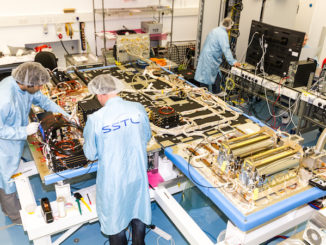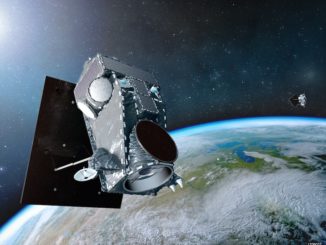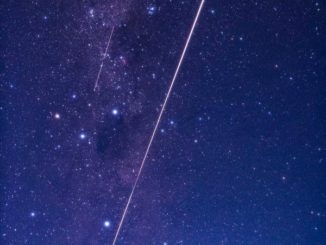H-IIAロケット33号機の打ち上げ 竹崎展望台より。 pic.twitter.com/dtpaszjeqY
— 柴田孔明 (@koumeiShibata) March 17, 2017
A Japanese spy satellite launched aboard an H-2A rocket Friday, heading for a 300-mile-high (500-kilometer) orbit to track North Korean and Chinese military movements as tensions run high in the region.
Equipped with a cloud-penetrating radar capable of seeing targets day or night, the secretive spacecraft was enclosed in the nose fairing of the H-2A rocket for the ride into orbit. Liftoff from the Tanegashima Space Center in southern Japan occurred at 0120 GMT Friday (9:20 p.m. EDT Thursday) at the opening of a nearly 14-minute launch window.
The launch was timed for 10:20 a.m. Friday Japan Standard Time. The mission was delayed 24 hours due to a poor weather forecast Thursday.
Japanese government officials have not disclosed the exact capabilities of the radar spy satellite, but the radar instrument aboard the surveillance orbiter can likely resolve objects on the ground as small as a meter, or around 3 feet, in size.
The so-called Information Gathering Satellite, named IGS Radar 5, is Japan’s sixth radar reconnaissance satellite. Japan also flies spy satellites with electro-optical cameras, which offer sharper imagery but only in daytime and when skies are clear.
Japan’s government surveillance observatories in orbit are part of a program run by the Cabinet Satellite Intelligence Center, which reports directly to the Japanese government’s executive leadership.
Japan established the space-based reconnaissance program in the wake of a North Korean missile test over Japanese territory in 1998. Although the program was initially aimed at monitoring North Korea, the satellites can take pictures of nearly any place on Earth each day.
The launch of IGS Radar 5 was planned long before North Korea’s most recent missile tests.
Japanese officials say data from the Information Gathering Satellites support civilian applications, such as responding to natural disasters.
Thursday’s launch was the 33rd flight of an H-2A rocket, and the second H-2A launch this year.
The Japan Aerospace Exploration Agency, which owns and operates the Tanegashima Space Center, issued updates on the launch date for the IGS Radar 5 spacecraft. But JAXA did not provide live video coverage of the flight, a common practice for previous Japanese rocket missions with defense-related payloads.
Mitsubishi Heavy Industries, the H-2A’s prime contractor, also did not release updates on the progress of the countdown, as the company typically does with commercial and scientific missions.
The image below was tweeted a few hours before liftoff by a Japanese journalist Koumei Shibata covering the launch at Tanegashima.
恒例のレンズテスト。 pic.twitter.com/2KilXNos8U
— 柴田孔明 (@koumeiShibata) March 16, 2017
The 174-foot-tall (53-meter) H-2A rocket headed south after blastoff targeting a polar orbit, climbing into space over the Pacific Ocean with around 1.4 million pounds of thrust from its hydrogen-fueled LE-7A main engine and two strap-on solid rocket boosters.
The boosters burned out and dropped away at around T+plus 1 minute, 48 seconds, followed by the release of the H-2A’s protective payload fairing around four minutes into the mission, exposing the spy satellite payload once the rocket is above the dense lower layers of the atmosphere.
Around six-and-a-half minutes after liftoff, the LE-7A main engine turned off and the first stage detached to fall into the Pacific Ocean. The LE-5B second stage engine — also burning liquid hydrogen — ignited to place the IGS Radar 5 satellite into orbit.
Deployment of the spacecraft from the rocket’s upper stage occurred less than 20 minutes after launch.
The next H-2A launch in the coming months will loft the second satellite in the Quasi-Zenith Satellite System, a set of navigation aids orbiting more than 22,000 miles (nearly 36,000 kilometers) above Earth to augment GPS positioning services over Japan.
Email the author.
Follow Stephen Clark on Twitter: @StephenClark1.



